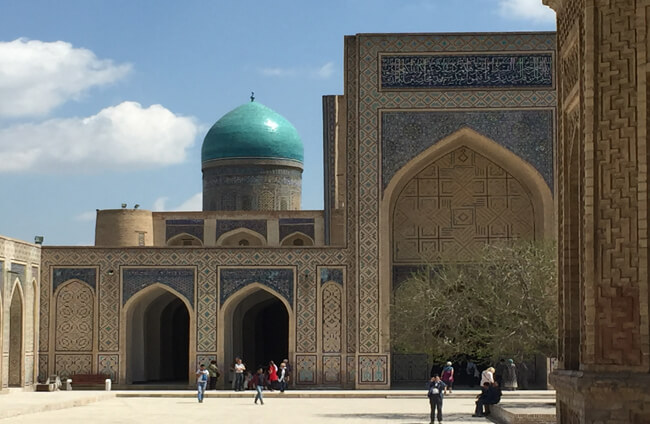-

 Know, the true nature of your Beloved.
Know, the true nature of your Beloved.
In His loving eyes, your every thought,
Word and movement is always –
Always Beautiful.
~ Hafiz
Masters of Wisdom

The Masters of Wisdom
The ‘Masters of Wisdom of Central Asia’ were a succession of extraordinary Saints that lived in a golden region along the Silk Road, in a golden age of Islam, that formed part of the Naqshbandi Golden Chain.
At the comparatively early age of thirty five, Khwaja Yusef al-Hamadani was already recognized as a Sufi Master, and he was the first to receive the title of ‘Khwaja’. He was also the ninth Shaykh in the Naqshbandi Golden Chain.
The thirteen Naqshbandi Sufi Masters that followed Khwaja Yusef were also given the title of Khwaja, forming the ‘Khwajagan’ – the path of the Khwajas. The Khwajagan seldom took any part in the affairs of state, but they had a great influence with both the rulers and the people.
‘Khwaja’ originally meant ‘possessed of superior learning’. The word was of Persian origin and wasn’t used in Arab countries.
The name was resumed under the Sassanid Kings for the Wazir, the Chief Counsellor to the Monarch. Also, the Chief Wazir to the Samanid Kings was called the ‘Khwaja-I Buzurg’ and his insignia of office was an inkstand. The Khwajas under the Samanid Kings occupied much the same position as the Chancellors of the Plantagenet Kings of England. They were intended to be, and were in fact ‘Masters of Wisdom’.
Khwaja Yusef was born in Hamadan in Persia and travelled to Baghdad when he was eighteen to study Islam and Sufism. After also studying in Central Asia, he returned to Hamadan to teach. Soon afterwards, he received invitations from a number of the centres of Islamic culture in Central Asia, including Merv, Bukhara and Herat. In 1080, Khwaja Yusef and some of his followers moved to Bukhara, providing the location of modern day Uzbekistan from which the Khwajagan would spread their teaching, becoming ‘The Masters of Wisdom of Central Asia’.
After Khwaja Yusef died, Khwaja Ahmed al-Yasavi, one of Khwaja Yusef’s deputies, returned to Yasi, later known as Tashkent, where he had a profound effect teaching the Turks of Central Asia. Before he left, he instructed his pupils to follow Khwaja Abdul Khaliq al-Ghujdawani.
Khwaja Yusef al-Hamadani’s fourth and greatest successor was Khwaja Abdul Khaliq al-Ghujdawani who is described in the Rasahat as the, ‘Grand Master of the central group of the Masters and the chief custodian of the Tradition’. He is the eleventh Shaykh in the Naqshbandi Golden Chain.
This succession of Khwajagan continued until the twenty third Shaykh in the Naqshbandi Golden Chain, when Khwaja Muhammad al-Amkanaki died and his successor, Shaykh Muhammad al-Baqi Billah, returned to India to continue the Naqshbandi Golden Chain of Masters.
Partially from ‘The Masters of Wisdom – An Esoteric History of the Spiritual Unfolding of Life on this Planet’ by John G. Bennett.
